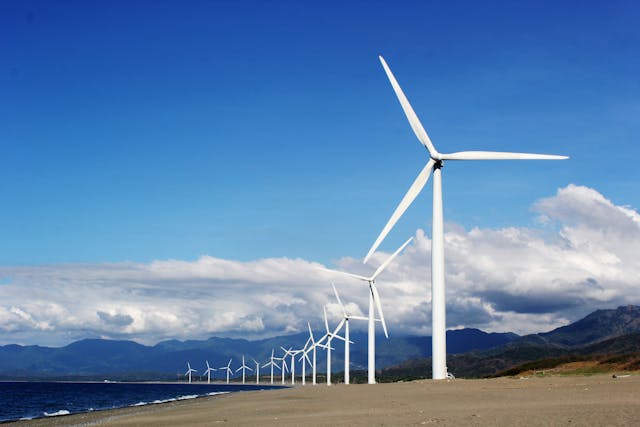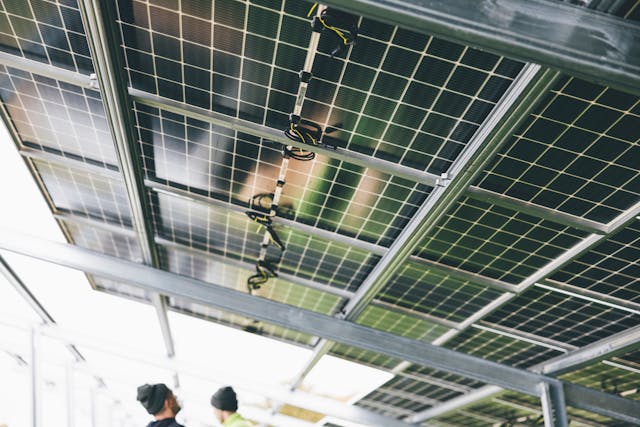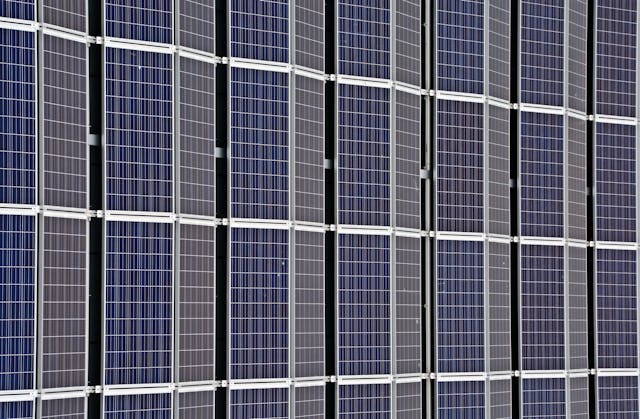The Impact of AI on Renewable Energy Solutions
The renewable energy sector is undergoing a revolutionary transformation, driven by the integration of artificial intelligence (AI). As global efforts to combat climate change intensify, the need for efficient and sustainable energy solutions has never been more critical. AI, with its advanced capabilities in data analysis, predictive modelling, and optimisation, is playing a pivotal role in enhancing renewable energy systems.
We look into the significant impact of AI on renewable energy solutions, exploring how it enhances efficiency, manages smart grids, and enables predictive maintenance.

AI in Renewable Energy: An Overview
Artificial intelligence encompasses a broad spectrum of technologies, including machine learning, neural networks, and predictive analytics, which are being harnessed to revolutionise the renewable energy sector. AI’s ability to process vast amounts of data and identify patterns is crucial for optimising the performance of renewable energy systems. From solar panels to wind turbines, AI technologies are being deployed to maximize energy output, reduce operational costs, and improve overall efficiency. By leveraging AI, the renewable energy industry is poised to meet the growing demand for clean and sustainable energy solutions.
Enhancing Efficiency in Energy Production
One of the most significant contributions of AI to renewable energy is its ability to optimise energy production. AI algorithms can analyze real-time data from various sources, such as weather conditions, energy consumption patterns, and equipment performance, to make precise adjustments that enhance efficiency. For instance, in solar energy systems, AI can predict periods of maximum sunlight and adjust panel angles accordingly to capture the most energy. Similarly, in wind energy, AI can forecast wind patterns and adjust turbine settings to maximize output. These AI-driven improvements lead to increased energy production and cost savings for energy providers.
Smart Grid Management
The concept of smart grids has revolutionised the way energy is distributed and managed. AI plays a crucial role in enhancing the functionality and reliability of smart grids. By analysing data from sensors and meters across the grid, AI can predict energy demand, detect faults, and optimise load balancing. This ensures a stable and efficient energy supply, reducing the risk of outages and minimizing energy waste. For example, AI can dynamically adjust energy distribution based on real-time demand, ensuring that renewable energy sources are utilised effectively. This not only improves the overall efficiency of the grid but also supports the integration of renewable energy into existing infrastructure.
Predictive Maintenance and Fault Detection
AI is revolutionising the way renewable energy infrastructure is monitored and maintained. Through predictive maintenance and early fault detection, AI systems can analyse data from sensors and equipment to identify potential issues before they become critical. This proactive approach reduces downtime and maintenance costs, ensuring that renewable energy systems operate at peak efficiency. For instance, AI can monitor the health of wind turbines, detect unusual vibrations or temperature changes and alert operators to perform maintenance before a breakdown occurs. These advancements lead to increased reliability and longevity of renewable energy assets.

Energy Storage Optimisation
Energy storage is a critical component of renewable energy systems, as it allows for the efficient use of energy generated from intermittent sources like solar and wind. AI plays a crucial role in optimising energy storage solutions by managing battery performance, forecasting energy demand, and ensuring the efficient allocation of stored energy. AI algorithms can predict when energy demand will be highest and release stored energy accordingly, reducing the need for fossil fuel-based backup power. Real-world examples include AI-driven battery management systems that optimise charge and discharge cycles, extending battery life and improving overall energy efficiency.
Integration with IoT and Edge Computing
The integration of AI with the Internet of Things (IoT) and edge computing is creating a powerful synergy in the renewable energy sector. IoT devices, such as sensors and smart meters, generate vast amounts of real-time data that can be analysed by AI to enhance energy management.
Edge computing allows data processing to occur closer to the source, enabling faster and more efficient decision-making. Together, these technologies enable real-time monitoring and control of renewable energy systems, improving their performance and reliability. Future trends include the development of AI-powered edge devices that can autonomously optimise energy production and consumption.
Environmental and Economic Impact
AI-enhanced renewable energy solutions have significant positive impacts on both the environment and the economy. By improving the efficiency and reliability of renewable energy systems, AI contributes to the reduction of greenhouse gas emissions and the mitigation of climate change. The economic benefits include lower operational costs, reduced maintenance expenses, and increased energy production.
Additionally, AI-driven innovations create new opportunities for job growth and investment in the renewable energy sector. However, there are also challenges to consider, such as the ethical implications of AI and the need for robust cybersecurity measures to protect energy infrastructure.
Future Prospects and Innovations
The future of AI in the renewable energy sector is full of exciting possibilities. Emerging AI technologies, such as quantum computing and advanced neural networks, have the potential to further revolutionise energy production and management. Innovations in AI-driven energy storage, smart grid technologies, and autonomous energy systems will continue to enhance the efficiency and sustainability of renewable energy solutions. As AI research and development progress, we can expect to see even more sophisticated and integrated energy systems that leverage the power of AI to create a sustainable, AI-powered energy ecosystem.

Final Thoughts
To conclude, artificial intelligence is playing an increasingly pivotal role in advancing renewable energy solutions. By enhancing efficiency, managing smart grids, enabling predictive maintenance, and optimising energy storage, AI is transforming the way we produce and consume energy. The integration of AI with IoT and edge computing further amplifies these benefits, creating a smarter, more resilient energy infrastructure.
As we continue to face the challenges of climate change and the need for sustainable energy, AI offers a promising path forward. The environmental and economic impacts of AI-enhanced renewable energy solutions are profound, paving the way for a cleaner and more efficient energy future.
To fully realize the potential of AI in renewable energy, it is essential for stakeholders, including policymakers, energy providers, and consumers, to support and invest in AI-driven initiatives. By embracing these innovative technologies, we can accelerate the transition to a sustainable energy ecosystem. For those interested in learning more, exploring further reading, and getting involved in the renewable energy revolution, there are numerous resources and opportunities available.

Related Sustainable Tech Articles
Here are more sustainable technology articles you might want to sink your teeth into:
- DIY Solar-Powered Charger: Epicycle old tech for green energy
- Best Solar-Powered Gadgets for a Greener Lifestyle
- The Impact of AI on Renewable Energy Solutions
- How to Reduce Your Tech Carbon Footprint: Sustainable Tech Practices
- Eco-friendly Tech Upcycling Ideas for Earth Day
- Top 15 Eco-Friendly Gadgets for Earth Day










